“The Gravel Ride is a cycling podcast where we discuss the people, places and products that define modern gravel cycling. We will be interviewing athletes, course designers and product designers who are influencing the sport. We will be providing information on where to ride, what to ride and how to stay stoked on gravel riding.” – The Gravel Ride
The Gravel Ride podcast is the brainchild of Craig Dalton, a gent equally as passionate about gravel cycling as the founder of Gravel Cyclist, JOM aka Jayson. The two entities will partner on a number of projects that will highlight everything Craig mentioned in the opening paragraph and more.
Without further ado, it’s time to get the ball rolling! Our first collaboration is with Stephen Fitzgerald of Rodeo Adventure Labs. In addition to Craig’s podcast content, we have technical data and images for the Rodeo Adventure Labs Trail Donkey 3.0, just below.
The Gravel Ride Podcast
In this episode, Stephen talks with Craig about the TrailDonkey 3.0 and entrepreneurship.
You can also find The Gravel Ride on iTunes and Spotify.
Rodeo Adventure Labs Trail Donkey 3.0 Tech
“What if nobody had told us that we needed a different bike for each day of the week and every different riding surface?” – Rodeo Adventure Labs
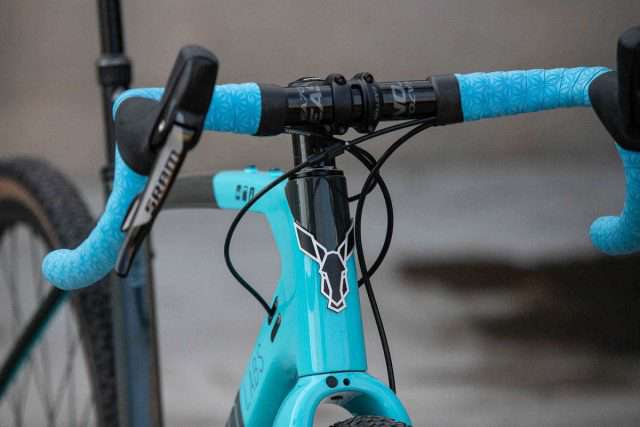
“What if a bike was neither good nor bad at anything? What if, instead, it was merely a capable tool for testing yourself and proving your own mettle?”
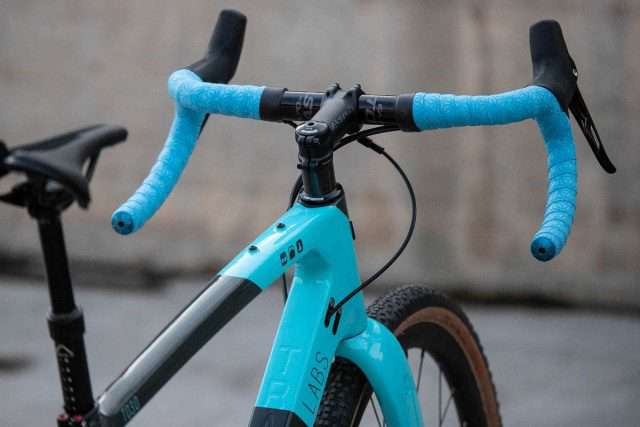
“To Rodeo Labs these are not abstract questions. They are the inspiration by which we design and engineer our premiere bike: Traildonkey 3.0.”
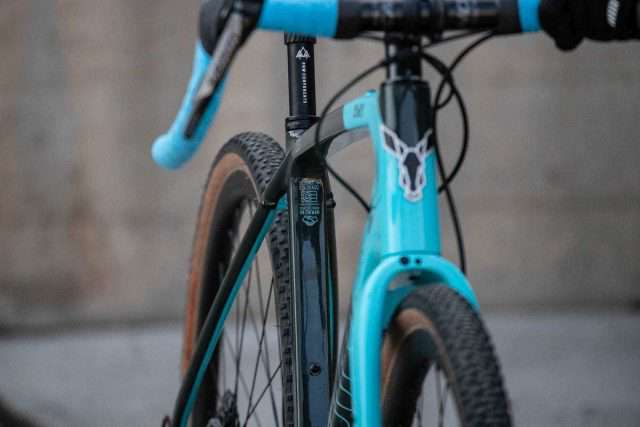
Trail Donkey bikes from previous generations are known for their versatility and function. For Version 3.0, the folks at Rodeo Adventure Labs have upped the ante, with a bike that capably handles pavement, singletrack, gravel and whatever madness you can throw at it.

“Since 2014, our eyes for rugged conditions have only gotten bigger and the punishment we’ve subjected the bike to has only gotten more severe. While we wanted to create a more capable bike, we did not, however, want to turn Traildonkey into an overbuilt, drop bar mountain bike. We wanted to stay true to the original principles of the bike which required that it feel at home in the intensity of a competitive road group ride, a 200-mile gravel race, a winding ribbon of singletrack, or a multi-day bikepacking trip.”
I’ve yet to ride or review a Trail Donkey 3.0 and cannot account for its virtues, but there’s no denying it’s a sharp looking bike.
“The entire 3.0 rear triangle, from the seat tube back, has been completely redesigned. Over the years we’ve formed some strong opinions on what makes a great bike.”
One of the major improvements for TD3 aka Trail Donkey 3.0 is increased tyre clearance. Here at Gravel Cyclist, we’ve been touting this as a problem with bike design for years. Not enough tyre clearance! Finally, manufacturers such as Rodeo Adventure Labs and more are listening.
“Our newest Donkey has that in spades. On Rodeo 650b rims with a 24.5 mm ID (inside diameter) and 2.25″ (57mm) tire will fit on TD3. On Rodeo 700c rims with a 24mm ID a 2.0″ (50mm) tire will fit on TD3.*”
*Real-world tire size varies as a function of rim width and tire casing. A maximum responsible tire size is not only a matter of frameset clearance, but it is also a function of conditions such as mud. Rider weight and strength are also factors in frame flex which should be considered when determining how much clearance any given rider needs.
“In order to achieve greater tire clearances, extensive and careful shaping was required in the design of the rear triangle. Pronounced asymmetry between drive and non-drive side stays can be clearly seen in our design.”
Rodeo Adventure Labs honed the rear dropout design, arguably among the simplest and most elegant going, along with touches considered standard equipment on any high-end gravel bike; flat-mount brakes and well-executed derailleur housing routing.
For groupsets such as SRAM’s wireless eTap shifting, there are no residual cable housing protrusions, just clean lines.
The example bike pictured above may be configured for a 1x drivetrain, but fans of 2x are not left in the dark. The front derailleur mount is easy to add, or remove.
“Rack and fender mounting eyelets are once again standard on TD3 on both the frameset and fork and now feature larger clearances for fender / tire combinations.”
“Traildonkey 3.0 and Spork 2.0 were developed in tandem to work together as a single system.”
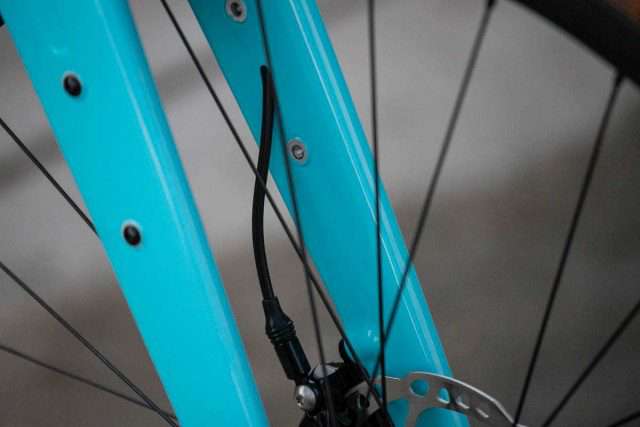
“Spork 2.0 matches TD3 tire clearance and adds additional versatility in the form of integrated dynamo hub, headlight, and USB stem cap integration.”
“Spork 2.0 features mid-leg eyelets allowing expanded water and 12.5kg of gear carrying capability.”
“Spork also features two axle eyelets on the end of each leg and an optional offset eyelet hardware kit (available February ’19), which allow for a massive range of rando racks, low rider racks, fenders, and combinations thereof.”
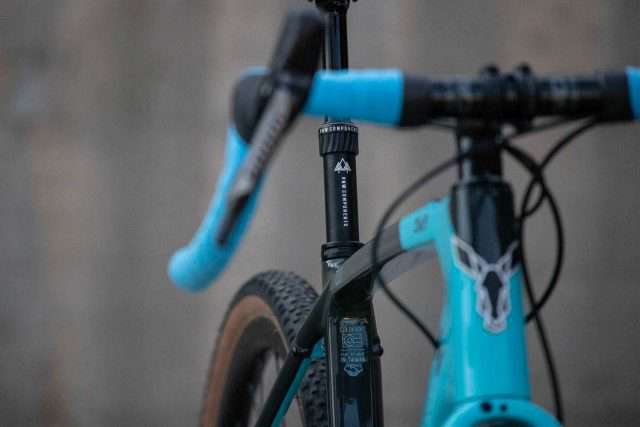
Rodeo Adventure Labs spent considerable time improving the TD3 over its predecessors, but that also included beefing up frame strength in critically stressed areas.
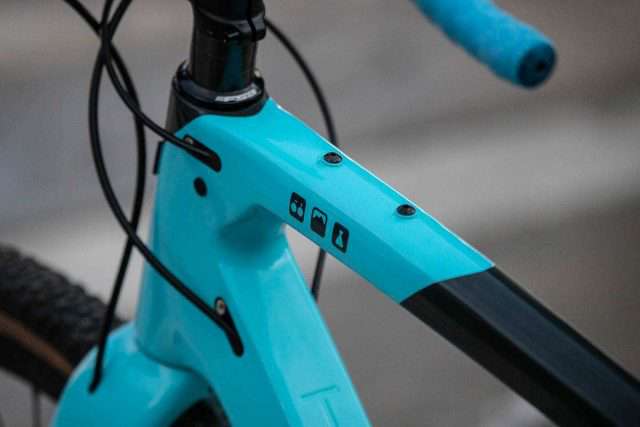
“In both lab and real-world testing TD3 is leaps and bounds stronger than any previous Traildonkey frameset. So many modern bikes are engineered with a disproportionate emphasis on light weight. We believe that the arms race to shave grams has resulted in a reputation for carbon framesets as fragile, almost disposable. With TD3 we have created a frameset that will reliably serve its owner over the long term and we back it with a lifetime warranty*.
Read more about the warranty at the website link at the bottom of this article.
“Our engineering culture is to integrate an excess of strength into the frameset; to create a frameset that will stand the test of time on road, gravel, and trail.”
In 2019, to say there are a few bicycle bottom bracket standards would be an understatement. However, Rodeo Adventure Labs have chosen one of the better ones going in the threaded T47 standard.
Beyond the scope of these photos is the removable bottom bracket cover, complete with drain hole. Allowing water to exit the frame is thoughtful and nice, and for anyone who has ever fished Di2 electronic wiring through a frame, you will appreciate the removable bottom bracket cover.
According to Rodeo Adventure Labs, the “naked” raw carbon + clear coat 58cm Traildonkey 3.0 without various hardware weighs in at 1350 grams. The average hardware weight on the frame is about 70gr. The average Spork weight is about 600 grams.
“Paint weights vary, but paint can add between 50gr and 150gr to the frame and fork. Each frame size 56cm, 54cm, 52cm weighs approx 50gr less than the size above it.”
“Traildonkey is constructed with Toray T800 carbon for high strength and high performance in real-world use. Each frame is constructed entirely by hand in Taiwan by a manufacturing partner with over 30 years of high-end carbon manufacturing experience.”
Frame Specifications
| Frame Material | Toray T800 carbon fiber |
| Country of manufacture | Taiwan |
| Design / Tooling | 100% proprietary |
| Frameset rider weight limit | 250lbs, 113kg |
| Frame weight | 58cm 1350g raw, 56cm 1300gr raw, 54cm 1250gr raw, 52cm 1200gr raw. Hardware 70gr. |
| Routing options | Mechanical, Di2, eTap. Convertible or cappable endcaps. |
| Brake Standard | Flat Mount disc brakes. Post mount adapter compatible. |
| Bottom Bracket | T47 threaded 68mm bottom bracket shell |
| Seat Post | 27.2mm |
| Seat Clamp | 31.8mm (6066 aluminum clamp included) |
| Through Axles | 12mm x 142mm rear. 15mm x 100 front. Front convertible to 12mm with optional conversion kit. |
| Headset | 1-1/8″ to 1.5″ tapered integrated cups (FSA Orbit ITA included) |
| Fork | Rodeo Spork 2.0 / Carbon adventure fork |
| Fork offset / rake | 45mm |
| Fork length | 396mm |
| Fork eyelets | 2 mid leg eyelets per fork blade. 2 eyelets on each blade near axle. Optional offset eyelet kit. |
| Fork crown bolt | Not included. 85mm length typically needed for lights / racks |
| Fork max load | 12.5kg total loaded fork weight (independent of rider weight) |
| Fork weight | Average 600g |
| Dynamo routing | Internal. Frame and fork. Front and rear light, USB stem cap, dynamo hub compatible. |
| Dropper post | Full internal routing for both internal actuation and external collar actuated posts. |
| Drivetrain | 2x or 1x drivetrain compatible. Removable front derailleur mount. |
| Crankset | Max 50t / 34t 2x chainring. Max 53t 1x chainring. Micro compact 32 / 48 compatible. |
| Tire clearance 650b | Min recommended tire 40mm. Max recommended tire 57mm / 2.25″. Varies by tire / rim / conditions |
| Tire clearance 700c | Min recommended tire 25mm. Max recommended tire 50mm / 2.0″. Varies by tire / rim / conditions |
| Derailleur hanger | Aluminum, replaceable |
| Di2 battery position | Downtube, custom mount (supplied) |
| Fender / Mudguard mounts | Frame and fork. Max 65mm at 700c. Removable seat stay mounting bridge. |
| Bottle mounts | 2 on inside main triangle. 1 on outside lower down tube. 1 on upper top tube. 2 on fork. |
| Rack mounts | Frame and fork |
Geometry
“Traildonkey fits true to size. That means if you order a 56cm, the frame will fit like a 56cm typically does. The frame does have a generous slope to its top tube, which lowers standover height and makes the bike much more fun on trails.”
“It also makes the frame adapted for dropper posts when built as a trail bike. The top tube slope can make the frame appear smaller, but the effective top tube height, reach, and other key measurements remain true to what you’d expect for each size.”
| Frame size | 52 cm | 54 cm | 56 cm | 58 cm |
| Seat tube (C-T) | 460 | 480 | 500 | 520 |
| Top tube length (effective) | 535 | 545 | 560 | 580 |
| Chain stay length | 435 | 435 | 435 | 435 |
| Seat tube angle | 73.5 | 73 | 73 | 72.5 |
| Bottom bracket drop | 65 | 65 | 65 | 65 |
| Head tube length | 120 | 145 | 160 | 175 |
| Head tube angle | 69.5 | 70 | 71 | 72 |
| Reach | 357 | 371 | 384 | 392 |
| Stack | 536 | 558 | 576 | 594 |
| Fork length | 396 | 396 | 396 | 396 |
| Fork rake | 45 | 45 | 45 | 45 |
| Front center | 595 | 604 | 611 | 615 |
| Wheelbase | 1020 | 1031 | 1038 | 1042 |
| Stand over height, at center of top tube, 700x40mm tire | 750 | 780 | 810 | 820 |


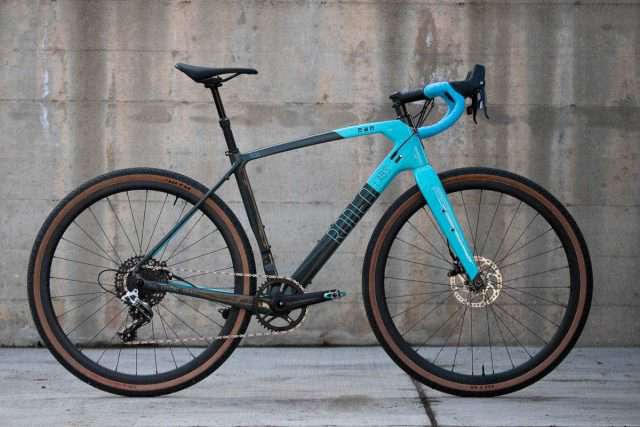
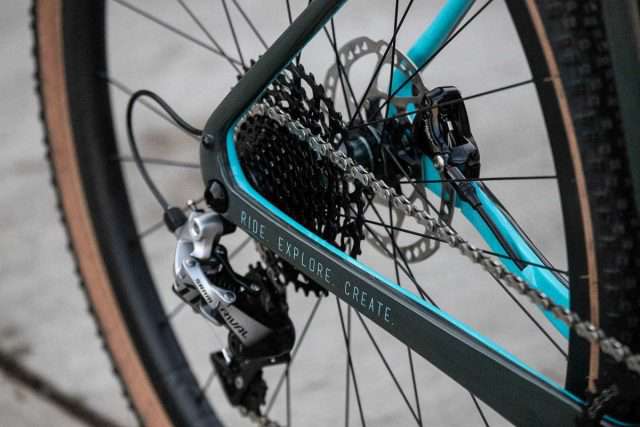
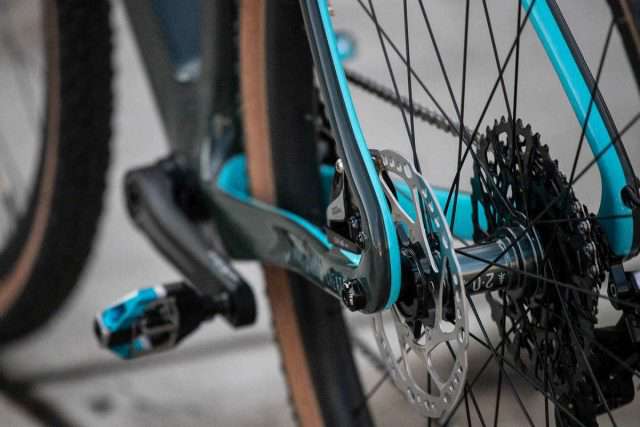
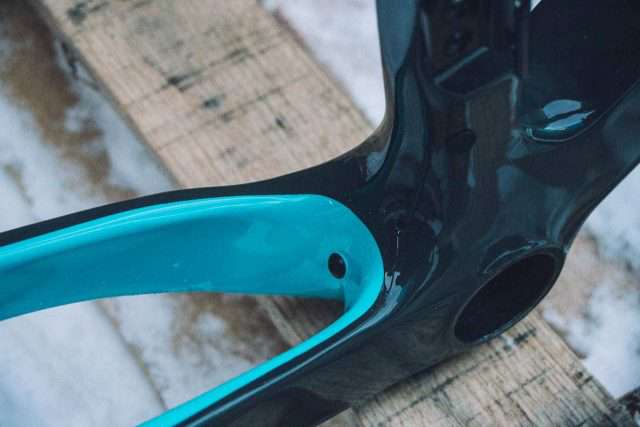
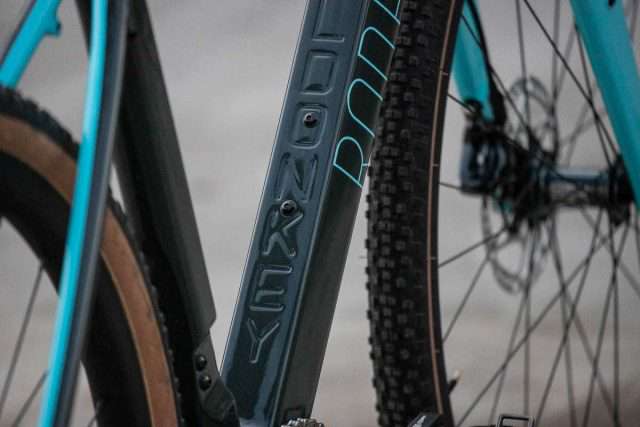
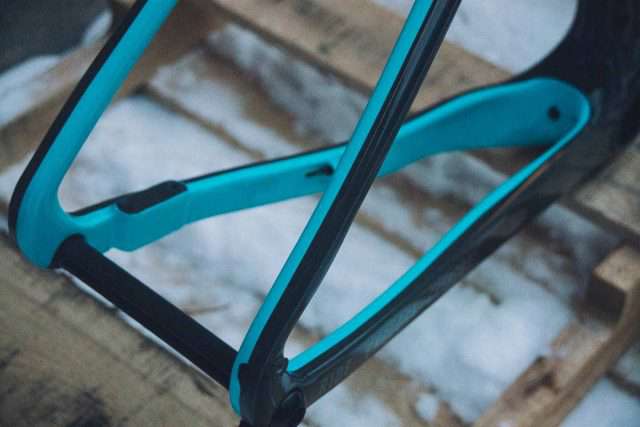
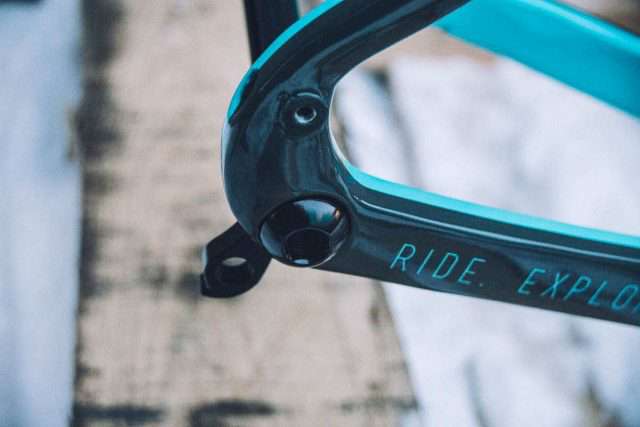
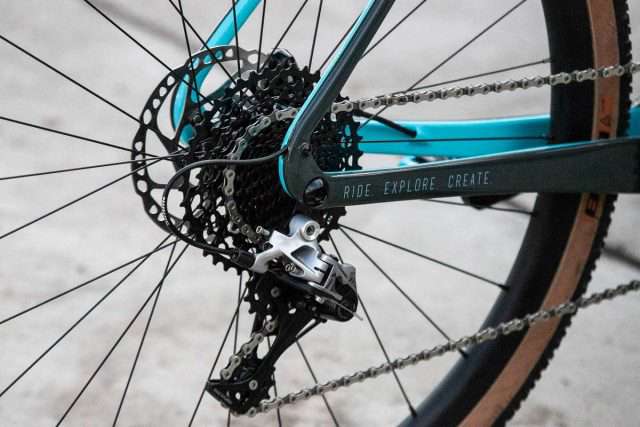
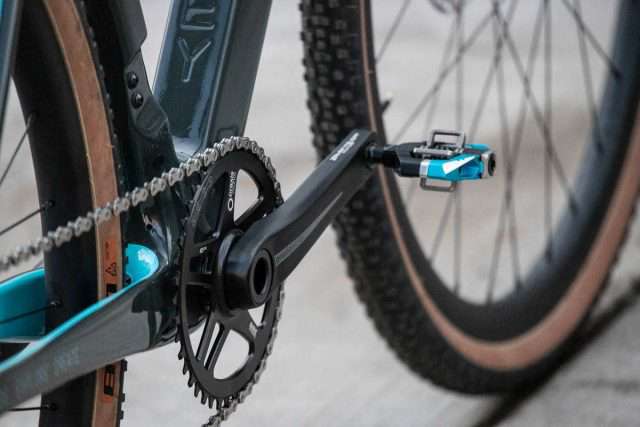
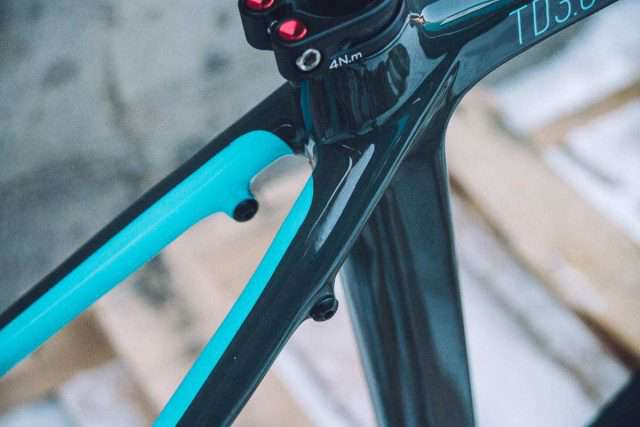
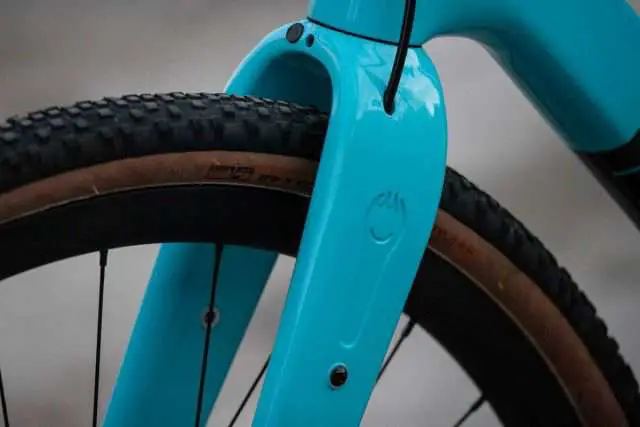
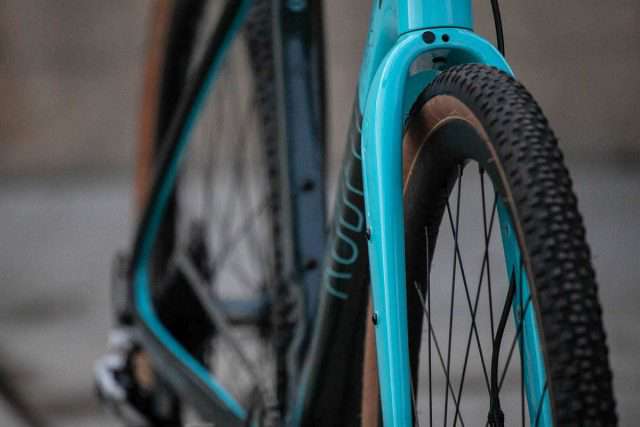
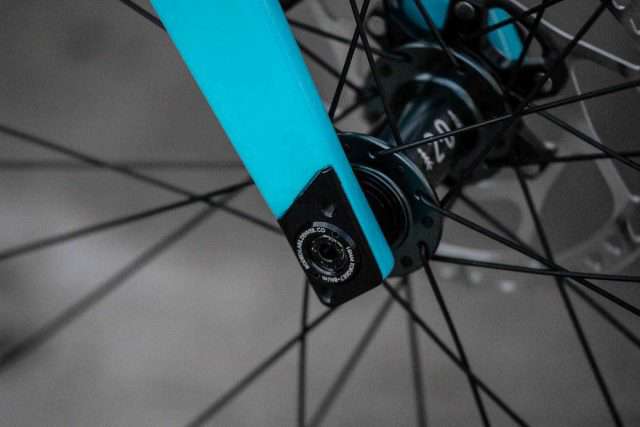
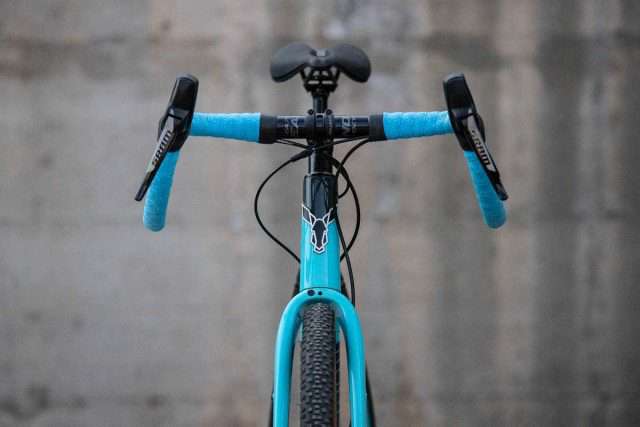
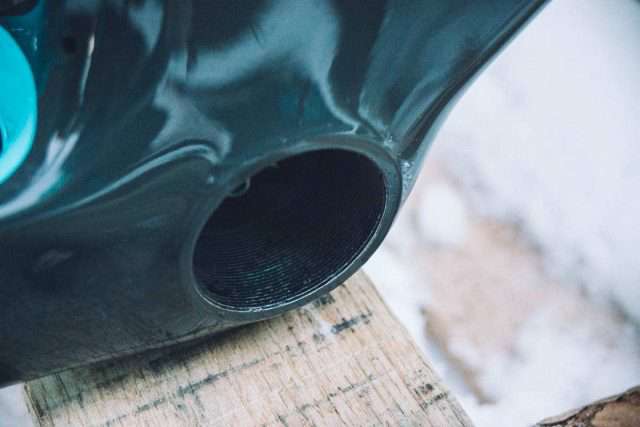
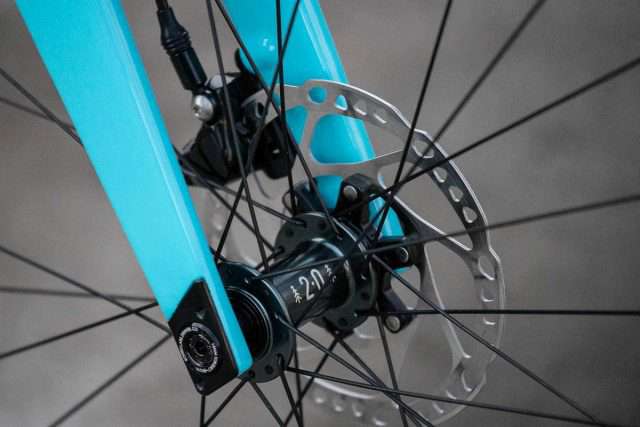
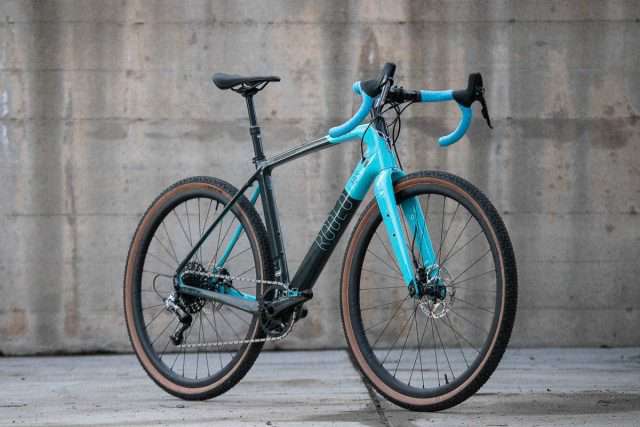
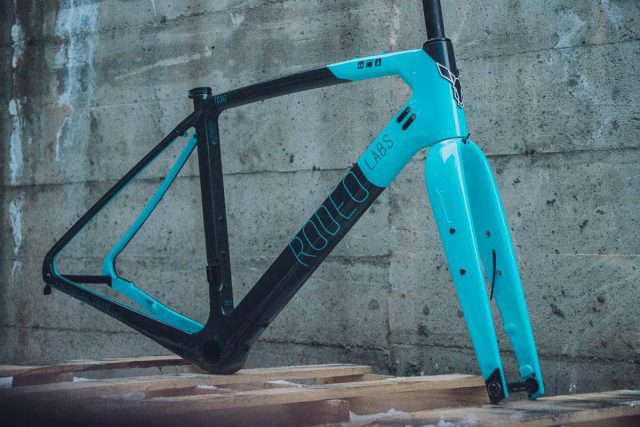
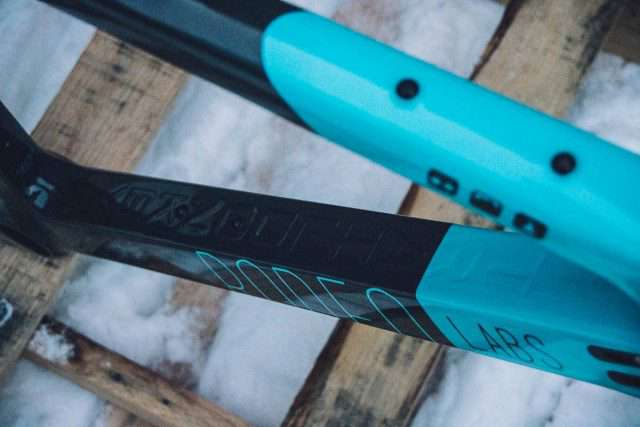
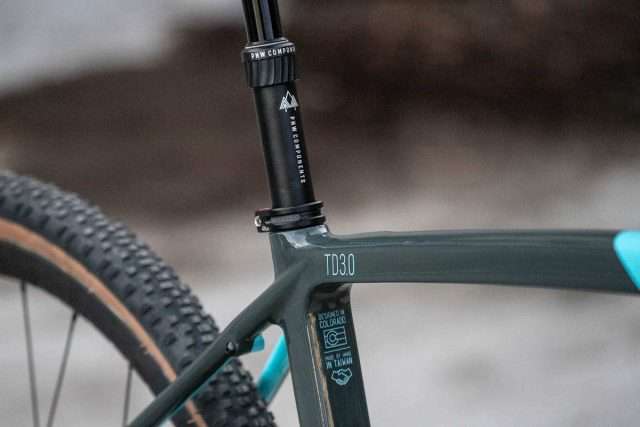
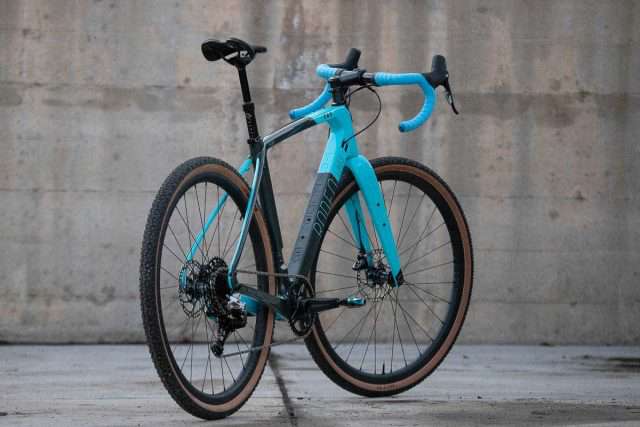
With all that extra beef, I wonder how compliant it rides of the gnarl?
I meant “In the Gnarl”, ie on rougher gravel.
I would like to review one and find out!
Finally, someone has made a high-end Gravelbike that will fit 700×50 tires. Whichever size wheel is used, 700c or 650b, a Gravelbike should be able to use at least 50mm tires and 56mm/2.2in tire clearance might be better. With 2.2in tire clearance Gravelbikes can dip into a large group of XC Race and Touring tires. It also makes Gravel bikes “Tour Divide” capable which I consider the ultimate Gravel challenge. Even if you don’t use 50-56mm tires, I think the extra mud clearance is also good thing. I hope clearance for 50-56mm tires becomes the industry standard. Why should a 700c Gravelbike require a 650b wheelset to use wider 45-56mm tires?
We said this about gravel bikes years ago… more clearance… nobody listened to us back then.
i love my 2.1TD. and like Stephen said buying sight-unseen via internet with a ‘new’ company was kinda spooky – but the bike has surpassed all my expectations. i get stopped all the time for pictures and a brief talk about the build and how it rides. the build process was awesome, lots of communication deciding what parts to choose; it was all great. the hardest part was waiting for the big bike box to arrive.
Nice! Glad to hear you had a more than positive experience.